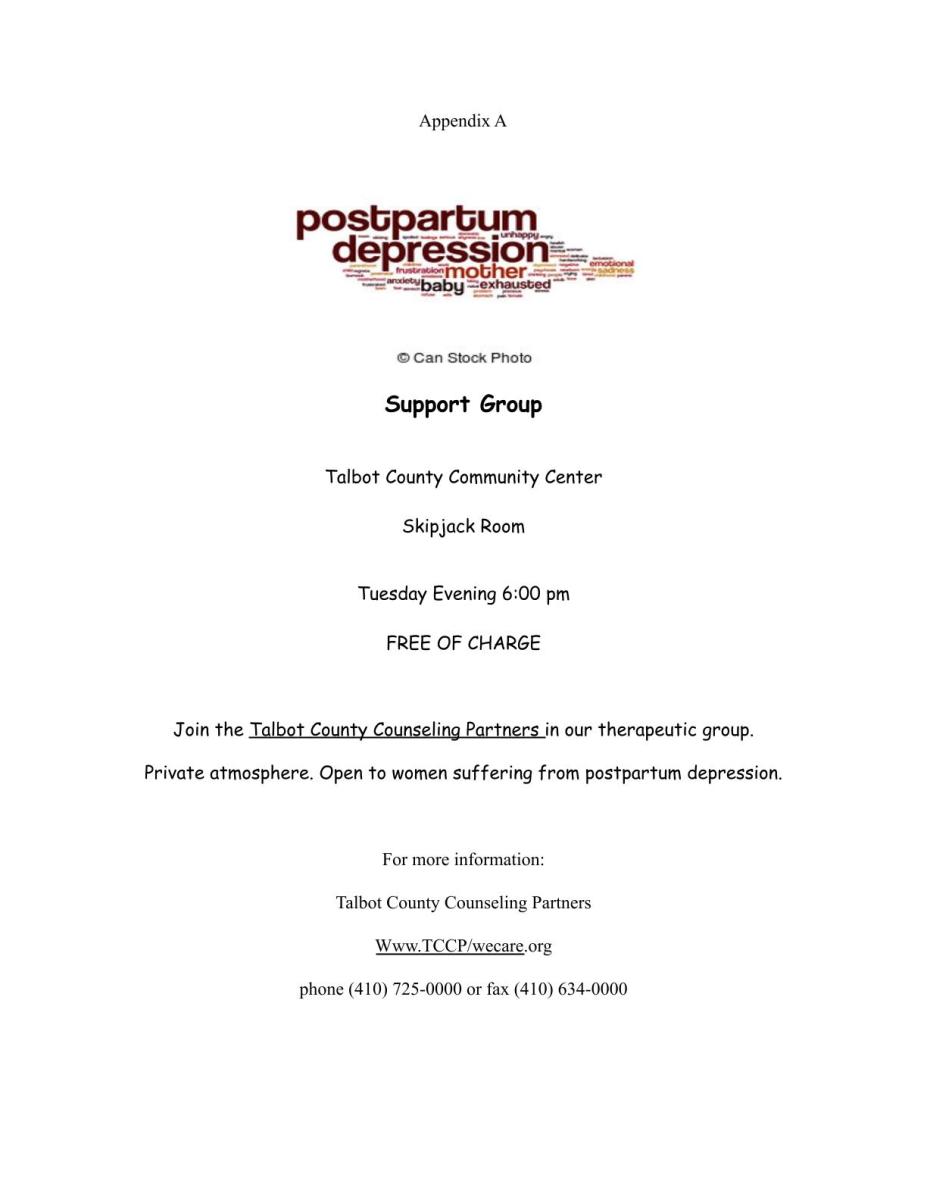Your First Pregnancy?


Your First Child Birth
Pregnancy, especially the first, can be an unnerving experience. Many women feel uncertain, cycling between periods of joy and depression. They may believe it's wrong to have negative feelings about their pregnancy. They may experience guilt feelings or repress their feelings. If this happens changes in body chemistry can occur, having potentially unhealthy consequences for both child and mother.
The best approach is getting in touch with these feelings, by discussing them with caring, trusted, understanding people. Hopefully the husband is a good listener.
Women should talk to other women who have had the same experience. In pregnancy, a woman's emotional and spiritual needs must be met in a healthy emotional climate. Also, the father has emotional and spiritual needs that shouldn't be neglected. God's plan is for a child's spirituality and emotions to be nurtured and protected.
A child's personality begins at conception. The human personality is constructed upon a physical and mental foundation set, in a genetic sense, by both parents and, in a spiritual sense, by God.
At conception, many elements contribute to a child's makeup. For example, the mother's nutrition during pregnancy. Certain drugs such as alcohol, and tobacco have damaging effects on a baby's development as well a mother's emotional state. If this occurs the mother should discuss those feelings with close friends and family. If this fails to resolve the problematic issues, it's best to seek out a professional counselor.
Labor and Delivery
Birth is a fascinating miracle provided by God. We tend to think of labor as something experienced by women. But amazingly, it's the baby who actually seems to control the labor process by producing a hormone triggering the onset of labor. And once labor begins, it controls the course of labor. The first stage of labor takes place from concept to full dilation (opening up) of the cervix.
The purpose of stage 1 is to enlarge the birth canal so a baby can pass through without injuring baby or mother. It begins with regular, painful uterine contractions about 20 to 25 minutes apart. They gradually increase in frequency, with discomfort ranging from the lower back to lower abdomen. Contractions last approximately 50 seconds. Between contractions the uterus relaxes completely. As labor progresses, contractions become more forceful and infrequent until, finally, they last about a minute, with three minutes or so between contraction.
-
Stage 1 of labor is preceded by three physical signs:
-
Expulsion of a mucous plug protecting the uterus from the cervical canal.
-
The passage of a small quantity of blood.
-
An outpouring of clear water from the vagina. If the water breaks before the onset of labor, it automatically begins soon afterward. Otherwise, it will break during the course of labor.
-
Stage 2 labor is from full cervical dilation to completion of birth. At the beginning of stage 2, uterus contractions change from an involuntary physical action to a physiological or psychological urge to bear down and push to expel the baby. The woman becomes intensely focused on the task at hand. Uterine contractions continue once every one or two minutes, and last about a minute. The baby's head descends through the birth canal, turning sideways without aid, then emerges from the vaginal opening, followed by the shoulders and body.
The infant's respiratory passages are aspirated to allow breathing. The umbilical cord is then clamped. The baby is still dependent, but now instead of being linked by the umbilical cord, the child is linked to their mother by her love and nurturing care. Within moments following delivery, the child takes the first breath of life. The babies color turns from bluish gray to a bright pink. Breathing may be irregular at first, but soon a regular pattern of breathing is established, followed by the baby's first cry.
-
Stage 3 labor is from complete delivery of the baby to expulsion of the placenta, or “after birth.”


Cesarean Section
In some cases, childbirth may need to be completed by a surgical procedure called cesarean section. An incision is made in the lower abdomen, and the baby is delivered directly through it, bypassing the birth canal. The uterus and abdomen are then surgically repaired. In later pregnancies, babies may be delivered by vaginal delivery, or another C-section procedure if necessary. Cesarean sections are routine and safe, although it entails more risk.
A cesarean section should be performed only when vaginal delivery is a greater risk, such as in cases involving:
-
Improper positioning of the baby, such as a breach, (bottom first rather than headfirst).
-
Placenta previa, meaning the placenta covers the cervical opening.
-
A pelvic outlet to small for the babies head to go through.
-
Physical distress of the baby.
-
Mothers health problems, such as diabetes, heart disease, pelvic tumors, or negative obstetric history.
Pain Management
Whether birth is experienced as joy or a painful ordeal depends largely on the mother's expectations. Although uterine contractions aren't gentle and present a certain amount of pain, a woman entering labor with a positive frame of mind can have an easier time during labor and delivery.
Pain can also be greatly alleviated by analgesics (painkillers). Many women choose not to use them because they want to experience the full effect of childbirth. However, a woman can change her mind and request medical help for pain control.
Painkilling analgesics may be given by mouth, injection, inhalation, or by epidural injection. These may include:
-
Mild analgesics and sedatives given during early stages to help patients relax, during prolonged labor. Sometimes a narcotic analgesic, such as Demerol, may be given by injection.
-
Inhalation analgesics, such as nitrous oxide and oxygen.
-
Conduction or epidural analgesia: Injection of an anesthetic directly into the spinal cords epidural space. The result is instantaneous, total pain relief. Conduction anesthetics can only be administered by certified anesthesiologists.
-
A Pudendal block anesthetic is an injection into a nerve in the lower rear region of the pelvis.
Childbirth pain, although real, quickly passes. As Jesus said in John 16:21,
“A woman, when she is in labor, has sorrow because her hour has come; but as soon as she has given birth to the child, she no longer remembers the anguish, for joy that a human being has been born into the world.”
Breast-Feeding
Most physicians agree breast-feeding is better than bottle feeding, especially during the first few months. Most hospitals encourage it. Babies don't require much milk during the first three hours after birth. Mother's milk contains antibodies that help eliminate infections.
Mother's milk is superior to cow's milk in quality of proteins and sterility. And mother's milk provides additional emotional warmth. Certain hormones released in breast-feeding also serve as a natural tranquilizer and help the mother's body return to to the shape before pregnancy shape.
Postpartum Depression
Postpartum depression affects about 90% of new mothers. This usually occurs during the first week following childbirth. Onset may even occur shortly after delivery. The depression most women experience following delivery is normal.
The reasons for postpartum depression include hormonal imbalances, family and social pressures, emotional stress, and physical exhaustion. Also, any emotional problems the mother had going into her pregnancy can be extremely magnified succeeding childbirth.
The new mother has experienced a physically exhausting ordeal, lost blood and is anemic. She loses sleep, while working day and night changing and feeding her newborn. Those around her need to ensure she takes care of herself and assist with the baby.
The new infant must receive good nutrition, and gets it much sleep as possible. Although it can be very draining at first, the baby normally settles down to a uniform schedule within a few weeks. If the baby is still responding to a reasonable schedule after two months, the mother should consult a pediatrician..
In extraordinary cases, postpartum depression can become a depressive illness involving insomnia, paranoia, irritability, crying, and guilt. In rare cases a mother may even reject the child. In such extreme cases, women may need medical and psychological treatment, being prescribed antidepressants and long-term counseling.
In even more rare cases where a depressed mother actually poses a danger to herself or baby, psychiatric hospitalization may become necessary. A woman prone to such severe and dangerous forms of postpartum depression should consider not having another pregnancy.
Birth Defects
Sometimes a birth presents serious challenges. Most fetuses are miscarried within the first three to four months. Miscarriages occur in about 20 to 25% of all pregnancies. Some however, are born with birth defects, such as Down's syndrome, previously referred to as “Mongolism,” a congenital defect involving mental retardation and physical abnormalities.
We must recognize God does allow such births to occur. Psalm 139 says we were designed by God in our mother's womb and the blueprint was created long before conception. We know God is love and able to work all things, for His good purpose.
“And we know that all things work together for good to them that love God, to them who are the called according to his purpose. For whom he did foreknow, he also did predestinate to be conformed to the image of his Son, that he might be the firstborn among many brethren” (Romans 8:28-29).
The parents of a child born with birth defects should receive support and counseling to help them through the grief process. A family may have to determine whether to put a severely retarded child into specialized care or care for them at home. There's no clear-cut answer. Some specialized care facilities offer special training, allowing parents to visit as needed. Many decide to put their children in special facilities, knowing they will receive better continuous care than can be provided at home. Others are thankful they kept their child home, despite any interruptions to their family life.






